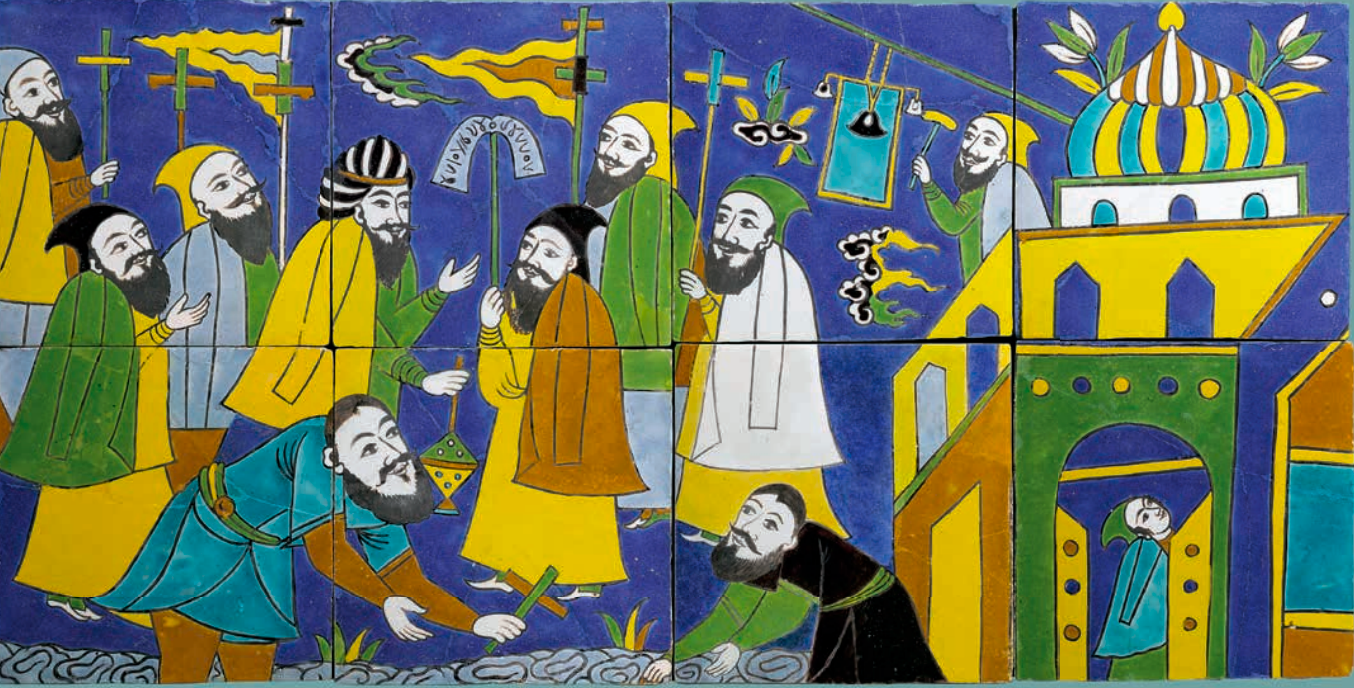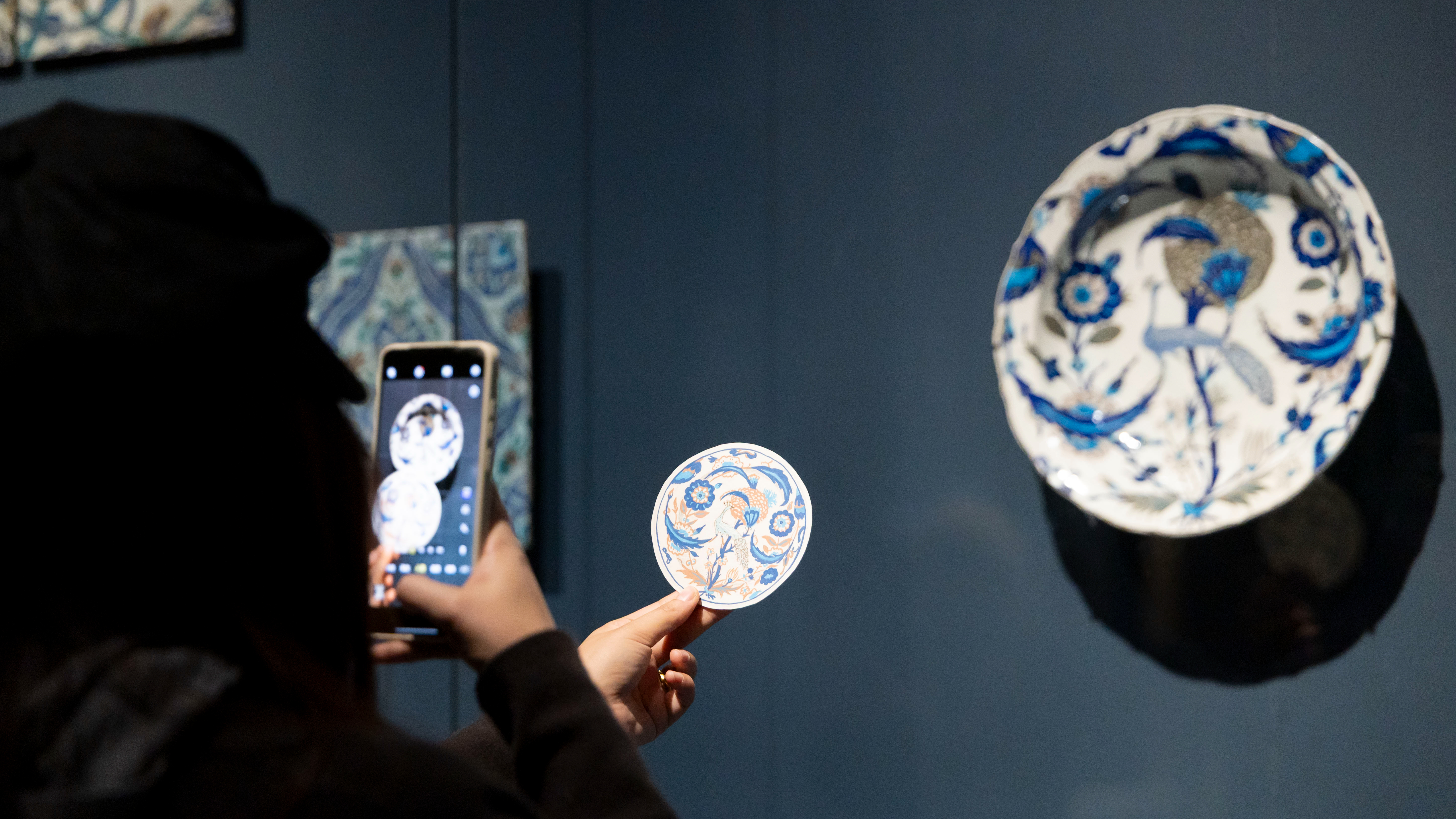Following the frenzy of visitors to Shanghai this summer with the Grand Orsay Exhibition in France, the Pudong Art Museum will welcome another major collaboration this December. Starting December 13, 2025, the Louvre Museum will bring its core Islamic art collection to Shanghai with the exhibition "The Miracle of Pattern: Masterpieces of Indian, Iranian, and Ottoman Art from the Louvre." This will be the Louvre's first exhibition in Shanghai and its largest-ever exhibition of its collection in China.

Exhibition poster for "Marvels of Pattern: Masterpieces of Indian, Iranian, and Ottoman Art at the Louvre"
Since its official opening to the public in 1793, the Louvre Museum in Paris has become one of the world's most iconic art museums. Its Islamic art department, reorganized and reopened in 2012, aims to showcase the significant contributions of the Islamic world to global art history. This collaboration with the Pudong Art Museum not only continues the Louvre Museum's mission of "dialogue among civilizations," but also marks a new phase in Sino-French cultural exchange.

Louvre Museum Image courtesy: Louvre Museum
Drawing on the Louvre's collection of Indian, Iranian, and Ottoman art, the exhibition spans Asia, Africa, and Europe from the 16th to the 19th centuries. Approximately 300 objects encompass ceramics, metalwork, jade, jewelry, textiles, calligraphy, painting, and woodcarving, showcasing the flourishing of Islamic art in the early modern period.

Book Binding with the The Nightingale and the Rose, Iran, 1775-1825, papier-mâché and lacquer © 2012 Musée du Louvre, dist. Grand Palais Rmn / Hughes Dubois
The "pattern" in the exhibition's title refers to a visual language that transcends materiality. In the floral patterns of India, the geometric ornamentation of Persian miniatures, and the metal inlays of the Ottoman court, pattern is not merely a decorative device but an embodiment of a worldview. It connects faith, poetics, and craft, revealing the complex symbiosis between art, mathematics, and nature.
These forms and concepts have left a profound impact on the history of modern design - their origins can be traced back to the floral ornaments of the European Art Nouveau movement and the pattern logic of contemporary graphic and architectural design.

Exhibition design diagram
Artworks "Picked by the King" by Louis XIV
This exhibition dates back to the reign of Louis XIV, the French "Sun King." At that time, the French royal family was in the midst of a collecting frenzy, with numerous art treasures from the Ottoman Empire and Mughal India entering the Palace of Versailles and the Louvre. This collection later became a significant milestone in the Louvre's collection of Islamic art, and also bears witness to the early era of artistic exchange and aesthetic integration in the context of globalization.

Celestial Globe, India, 17th-18th century, brass and silver © 2025 Musée du Louvre, dist. GrandPalaisRmn / Julien Vidal
In the 17th century, Louis XIV, the third king of the Bourbon dynasty of France, was deeply passionate about art. His collection of art treasures from around the world not only enriched the royal collection but also laid the foundation for France's national art collection system. Among them, Islamic art from the Ottoman Empire and the Mughal Empire attracted particular attention, becoming one of the most important examples of non-Western art in early European royal collections.

Ewer, India, circa 1585–1615, Mother-of-pearl and metal © 2024 Musée du Louvre, dist. GrandPalaisRmn / Hervé Lewandowski
Before becoming part of the national collection, these objects adorned royal palaces such as the Louvre, the Tuileries, and Versailles. Their ornate craftsmanship and intricate patterns reflect the peak prosperity and aesthetic taste of 17th-century French art. In this exhibition, visitors will be able to closely observe these Islamic treasures, "personally selected by the king," and experience the historical depth of cross-regional artistic exchange.

Poetry Contest Porcelain Plate, mid-17th-century Iranian glazed ceramic © 2012 Musée du Louvre, dist. GrandPalaisRmn / Raphaël Chipault
One such piece is a glazed ceramic plate titled "Majlis," from Iran, dating back to the mid-17th century. It depicts scholars reciting poetry in a garden. The figures are dignified, their garments flowing, and the blue and ochre glazes create an elegant rhythm. This "Majlis" imagery is a highly symbolic image in Persian culture—the fusion of poetry and painting, calligraphy and decoration, forming the spiritual paradigm of Islamic art. The work eschews Western perspective, organizing the imagery with a rigorous geometric order that echoes the rhymes of poetry. It embodies an "aesthetics of order" deeply rooted in Islamic tradition: art is not about imitating the world but rather constructing its spiritual order on a flat surface.

Dagger, India, 17th century. Steel, jade, gold, ruby, emerald © 2010 Musée du Louvre, dist. GrandPalaisRmn / Hughes Dubois
In this sense, “The Miracle of Pattern” is not only an exhibition about “beauty”, but also a concrete presentation of a history of the intersection of civilizations: between the Mediterranean and the Indian Ocean, between Persia and Europe, art has promoted the generation of a common language of order, symmetry and symbolism.

Dragon Vase, Iran, 17th century, Glazed ceramic © 2025 Musée du Louvre, dist. GrandPalaisRmn / Raphaël Chipault
Exhibition and Visual Experience
The exhibition's spatial design is by French designer Cécile Degos, who previously helmed the "Orsay" exhibition currently on view at the Pudong Art Museum. Degos employs an immersive spatial language to recreate the architectural atmospheres of India, Iran, and the Ottoman Empire. Domes, arches, and glazed brickwork echo the Pudong Art Museum's simple structure, allowing visitors to experience the changing rhythms of civilization as they journey through it.

Exhibition design diagram
"The Miracle of Pattern" is divided into three sections, showcasing masterpieces from India, Iran, and the Ottoman Empire. Two restored rooms will recreate, in near-authentic form, the furnishings of Islamic courts from the 17th and 18th centuries. Compared to the Louvre's main Islamic galleries, the Pudong Art Museum's version showcases a multi-layered play of color and light.

Window Screen, 17th-century sandstone from northern India © 2011 Musée du Louvre, dist. GrandPalaisRmn / Hughes Dubois
Re-examining these “patterns” in a contemporary context may mean rediscovering how art constructs connections with the world: they belong to Iranian craftsmen, Parisian collectors, and are the source of modern design.

Portrait of Fath-Ali Shah Qajar, Iran, 1800-1806, oil on canvas © 2022 Musée du Louvre, dist. GrandPalaisRmn / Hervé Lewandowski
(Note: The information in this article comes from the Pudong Art Museum)


